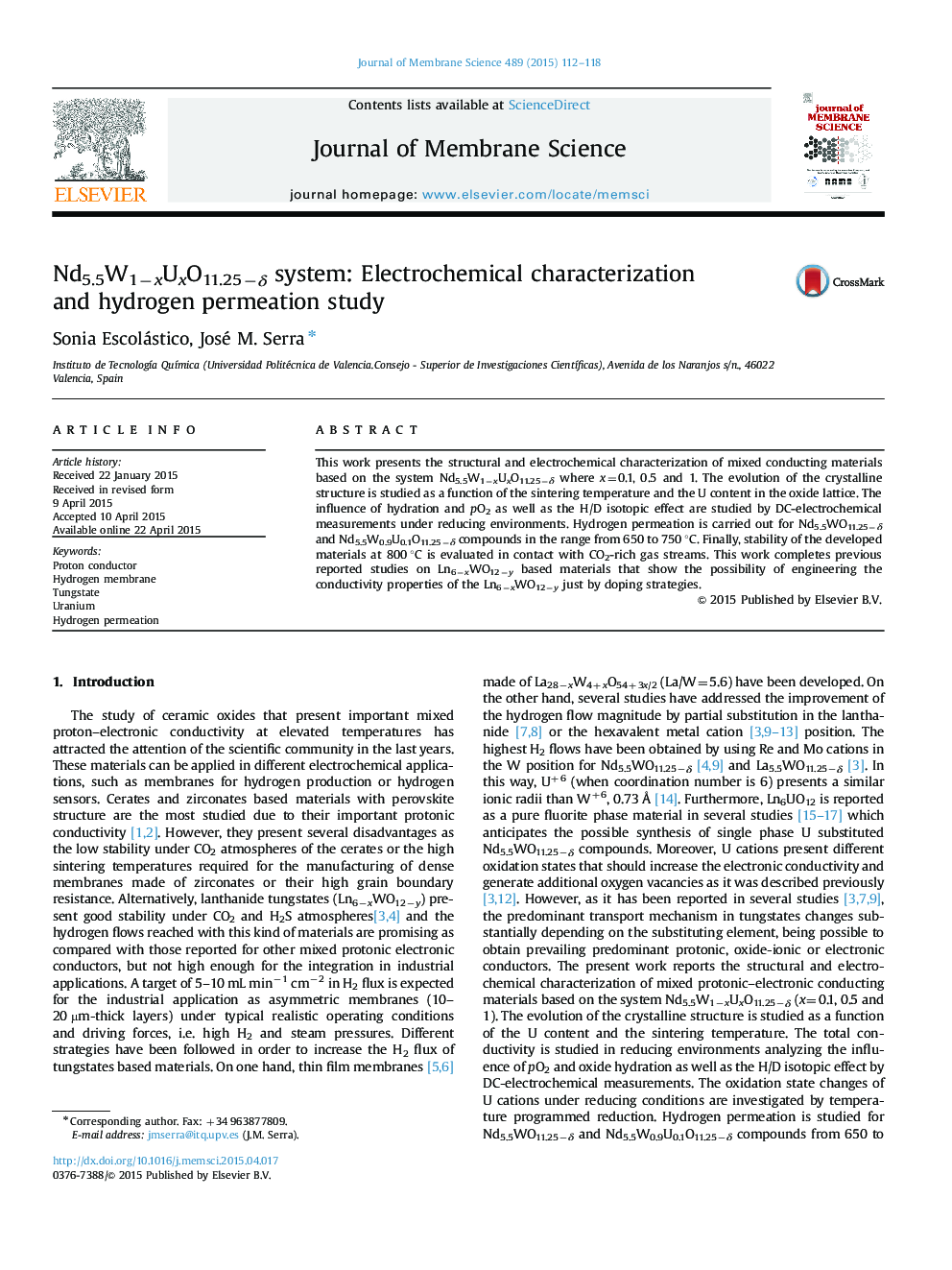| کد مقاله | کد نشریه | سال انتشار | مقاله انگلیسی | نسخه تمام متن |
|---|---|---|---|---|
| 632895 | 1456010 | 2015 | 7 صفحه PDF | دانلود رایگان |

• The symmetry evolves from cubic to rhombohedral symmetry with increasing U contents and sintering temperatures.
• Incorporation of U increases the total conductivity, becoming predominant oxygen ionic conductivity at high U%.
• The enhanced oxygen ion transport is assigned to the U+6 reduction to U+4.
• U additions allow reaching H2 flows due to H2 production via water splitting.
• Crystalline symmetry depends on U contents and sintering temperatures.
• U incorporation increases the total conductivity and the oxygen ion conductivity.
This work presents the structural and electrochemical characterization of mixed conducting materials based on the system Nd5.5W1−xUxO11.25−δ where x=0.1, 0.5 and 1. The evolution of the crystalline structure is studied as a function of the sintering temperature and the U content in the oxide lattice. The influence of hydration and pO2 as well as the H/D isotopic effect are studied by DC-electrochemical measurements under reducing environments. Hydrogen permeation is carried out for Nd5.5WO11.25−δ and Nd5.5W0.9U0.1O11.25−δ compounds in the range from 650 to 750 °C. Finally, stability of the developed materials at 800 °C is evaluated in contact with CO2-rich gas streams. This work completes previous reported studies on Ln6−xWO12−y based materials that show the possibility of engineering the conductivity properties of the Ln6−xWO12−y just by doping strategies.
Figure optionsDownload high-quality image (173 K)Download as PowerPoint slide
Journal: Journal of Membrane Science - Volume 489, 1 September 2015, Pages 112–118